
Cotton: Tajikistan’s pride and shame
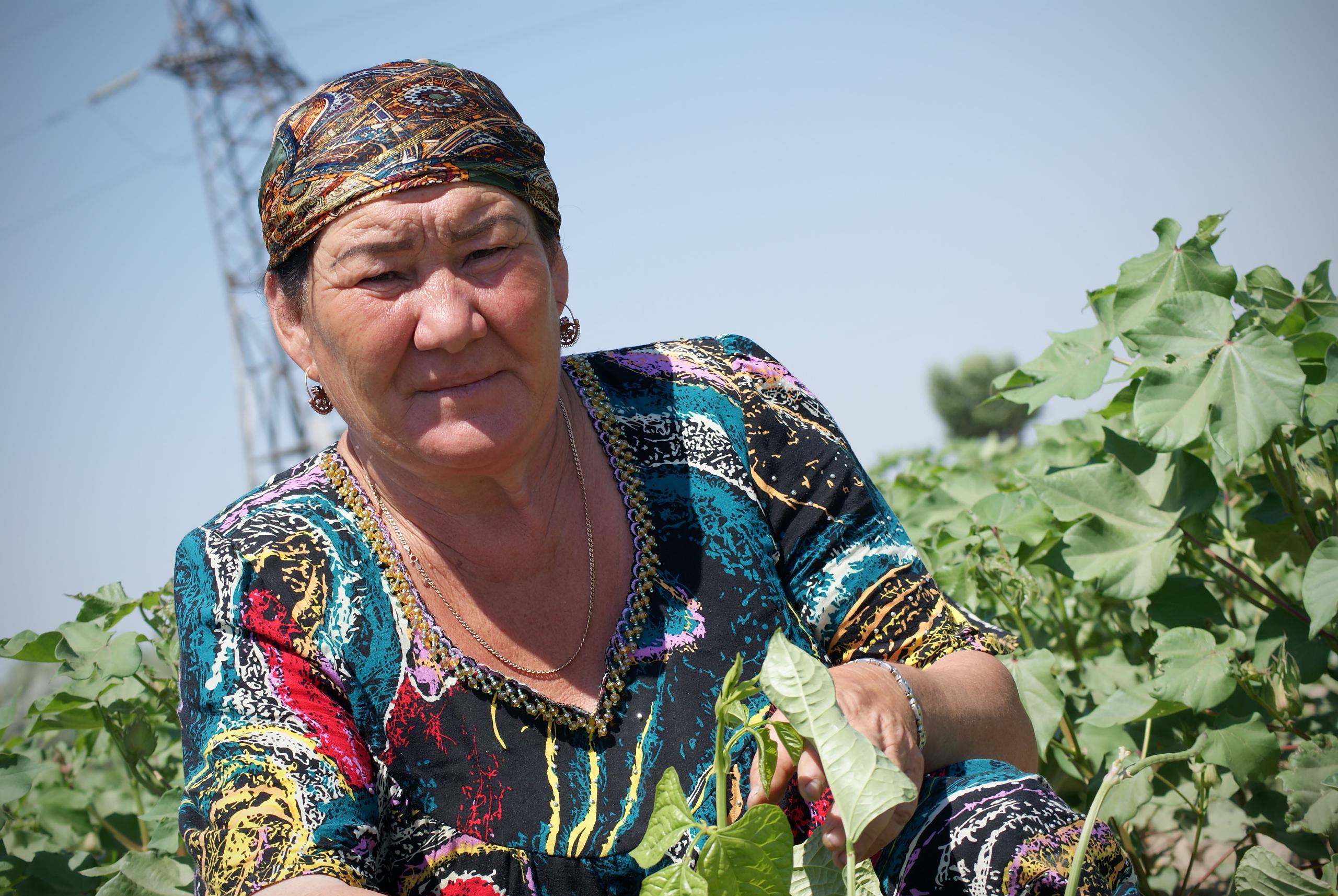
For decades, cotton covered almost all of Tajikistan's agricultural land. After the Soviet Union collapsed, it became clear that the country, which used to supply the rest of the bloc with cotton, was unable to feed itself. Swiss NGOs have been supporting the process of crop diversification and farming modernisation.
Cotton is a tricky crop to grow. Soft, fluffy and a delicate white, it is highly labour-intensive. The plant lives for 200 days and requires constant care, such as weeding and watering. But the toughest job is harvesting, which has just begun this month. Pickers have to pluck the cotton out of the hard-shelled boll quickly but carefully, as its dry edges cut the hands like a razor.
“We children used to collect the cotton in an apron tied around our necks. You can imagine how many times we had to fill our aprons, as we were supposed to pick 40 kilograms of raw cotton a shift,” remembers Firuza, a teacher from Dushanbe. When she was young, schoolchildren had to work in the fields every September and October. Adults pick 100 kilograms of raw cotton a day.
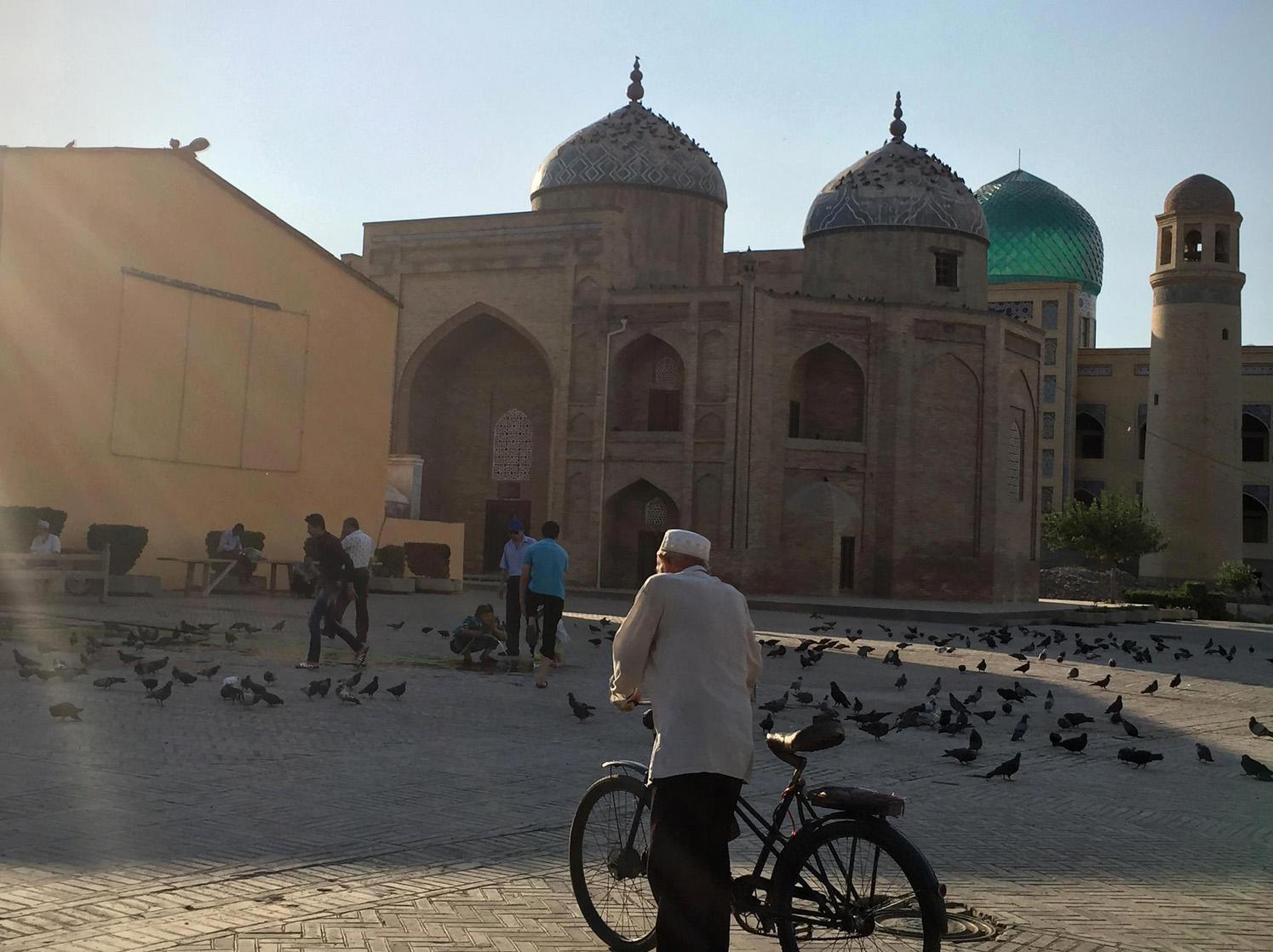
More
Tajikistan today
Cotton is a sensitive topic in Tajikistan today, one that the local inhabitants don’t like to talk about openly. For decades, the “white gold” made some people richer and others poorer, and now the “cotton question” has become a national disappointment. “We would be proud of Tajik cotton if we knew what happened to it afterwards. Today we know for sure that the ruling elite and dealers they work with are making a lot of money from it,” some confide.
We are driving around the environs of Dushanbe together with fellow journalists from the Tajik independent media group ASIA-Plus. In the rural area of Rudaki, where just a few years ago cotton fields stretched as far as the horizon, golden sheaves of wheat now greet the eyes. Since recent agricultural reforms gave farmers a relatively free rein in deciding what to plant, cotton production has gradually been declining. Today, it occupies a little over 60% of the country’s irrigated land (against nearly 100% in Soviet times).
“Tractor, dollar, quotation”
We drove to Sughd province’s Matcha region, close to the Uzbek border, under a burning sun. This is part of the Fergana valley, a fertile oasis irrigated by the tributaries of the Syr Darya, where cotton, rice, fruit, vegetables and cereals are grown.
After the collapse of the Soviet Union, the inhabitants of Matcha lived through hard times. As we drive, a local employee with a Tajik organisation – partnered with the Geneva-based international organisation Better Cotton Initiative – shares his memories. “I saw how people were killed for just a loaf of bread. I was 11 at the time, and with other boys from the village would slip over into Uzbekistan to buy food and grain.”
He later graduated from the Agrarian University and now teaches his countrymen Western agricultural techniques. We attended one of the training seminars held for local agronomists. They still work the land using spades and hoes, as there is a shortage of agricultural machinery.
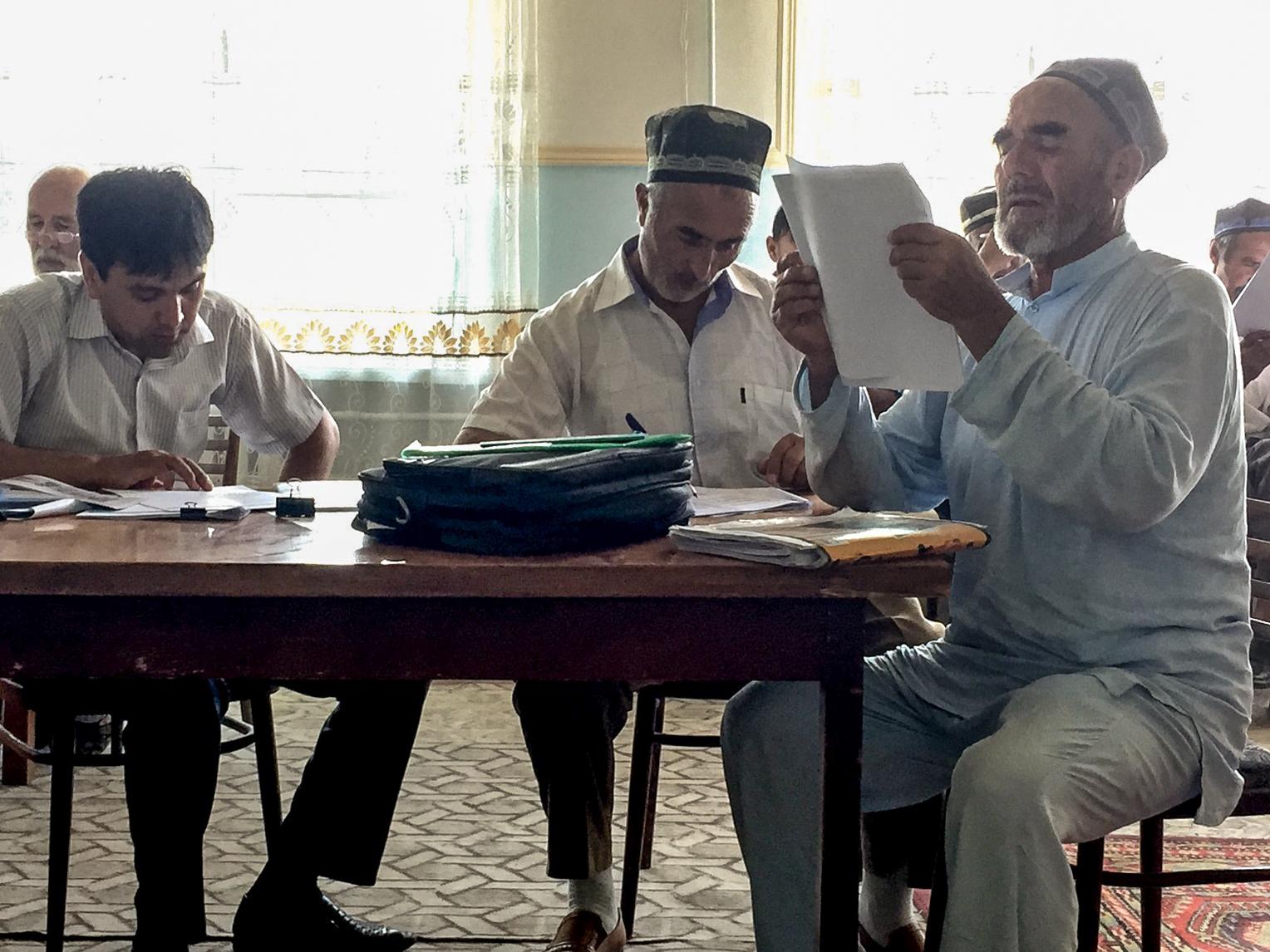
More
Reliable Swiss help the mountain folk of Pamir
“If you work as a group with the Sarob cooperative, you won’t need two to three middlemen. All you will need is one exporter and an international buyer,” explains Joachim Lenz, an agricultural consultant with the German Association for International Cooperation (GIZ), which runs technical development projects in Tajikistan.
“But how can we become exporters ourselves?” the farmers want to know. Joachim Lenz lifts his hands. “At the moment it’s difficult…,” he says diplomatically, “but if you pool your resources, you can enter the market not just with a few small consignments of raw cotton, but with a volume large enough to be of interest to importers.”
The farmers pause for a moment to talk. In Matcha, as in other rural areas of Tajikistan, it is the older men, with tanned, weather-beaten faces and wearing traditional skull caps, who decide everything. They conclude: “We can do it this year because many of us have planted the same kind of cotton.” In the discussion, which takes place in Tajik, we now and again hear the international words “tractor,” “dollar,” “quotation.”
“Tajikistan is a different case, compared with African countries for instance, as those working the soil are quite well educated,” Joachim Lenz observes. “Almost all are literate, and some even completed higher education during Soviet times. After the war, many former teachers and engineers turned to farming because no work was available in their professions.”
Less cotton, more vegetables
In Tajikistan, unfortunately, you can be smart but nonetheless remain poor. A farming family earns on average $1,000 to 2,000 a season, depending on the harvest and region. Income from agriculture can be increased by diversifying production.
Jamilya Yusupova, project manager at the Swiss NGO Helvetas, works with vegetable growers. “A hard-working farmer and his family can produce, for instance, 9 tons of cucumbers and 9 tons of tomatoes on their plot of land. They can also grow cabbage, onion and apricots. As a result, they will earn around $6,000 at harvest time.”
Tajikistan is one of the poorest of the former Soviet republics. In 1992, following the collapse of the Soviet Union, civil war broke out, which lasted until 1997.
President Emomalii Rahmon has been in power since 1992. He is currently serving his fourth seven-year term in office. The country is ranked as the third most corrupt by the Basel Institute on Governance, behind Iran and Afghanistan.
Some 90% of the country’s land space is mountainous and only 7% is irrigated. Two thirds of its eight million inhabitants live off agriculture. A million migrant workers, mainly Russian, account for half of the country’s GDP.
“Last year, farming families taking part in our project earned $2,100 net. In 2015, they should earn $2,200-2,400,” she says proudly. Some 1,500 small-scale farmers have attended training courses and consultation sessions organized by Helvetas this year. Since the Swiss NGO started working in Tajikistan in 2009, around 8,000 farmers have been trained.
Saving half a ton of “chemicals”
The idea of growing organic cotton in Sughd, Tajikistan also came from Helvetas. The GIZ has co-financed the Helvetas project in the country since 2013.
“A farmer uses almost 500 kilograms of mineral fertilisers and toxic chemicals per hectare of cotton,” explains Sherzod Abdurakhmanov, a manager at Helvetas. If you go organic, the productivity of your plot decreases at the beginning, so there is the risk that farmers who sign on enthusiastically in the first year become disappointed and return to the old way of working.
“Overall yield is very low at the moment, on average two to two-and-a-half tons of raw cotton per hectare, whereas in Soviet times it was four tons. But decades of intensive farming using pesticides have depleted and spoiled the soil. If we don’t introduce new methods, we will ruin it definitively.” There are other advantages to organic farming too: once the initial difficulties have been overcome, the cotton can be sold for 20% more on the market.
This year, Tajik farmers are due to conclude deals for the sale of 1,100 tons of organic cotton, with the help of specialists from Helvetas. “We can’t afford to make mistakes, as the well-being of many people who put their trust in us depends on the success of this project,” says Sherzod Abdurakhmanov. In his view, ordinary Tajik farmers are not at all ready for global competition.
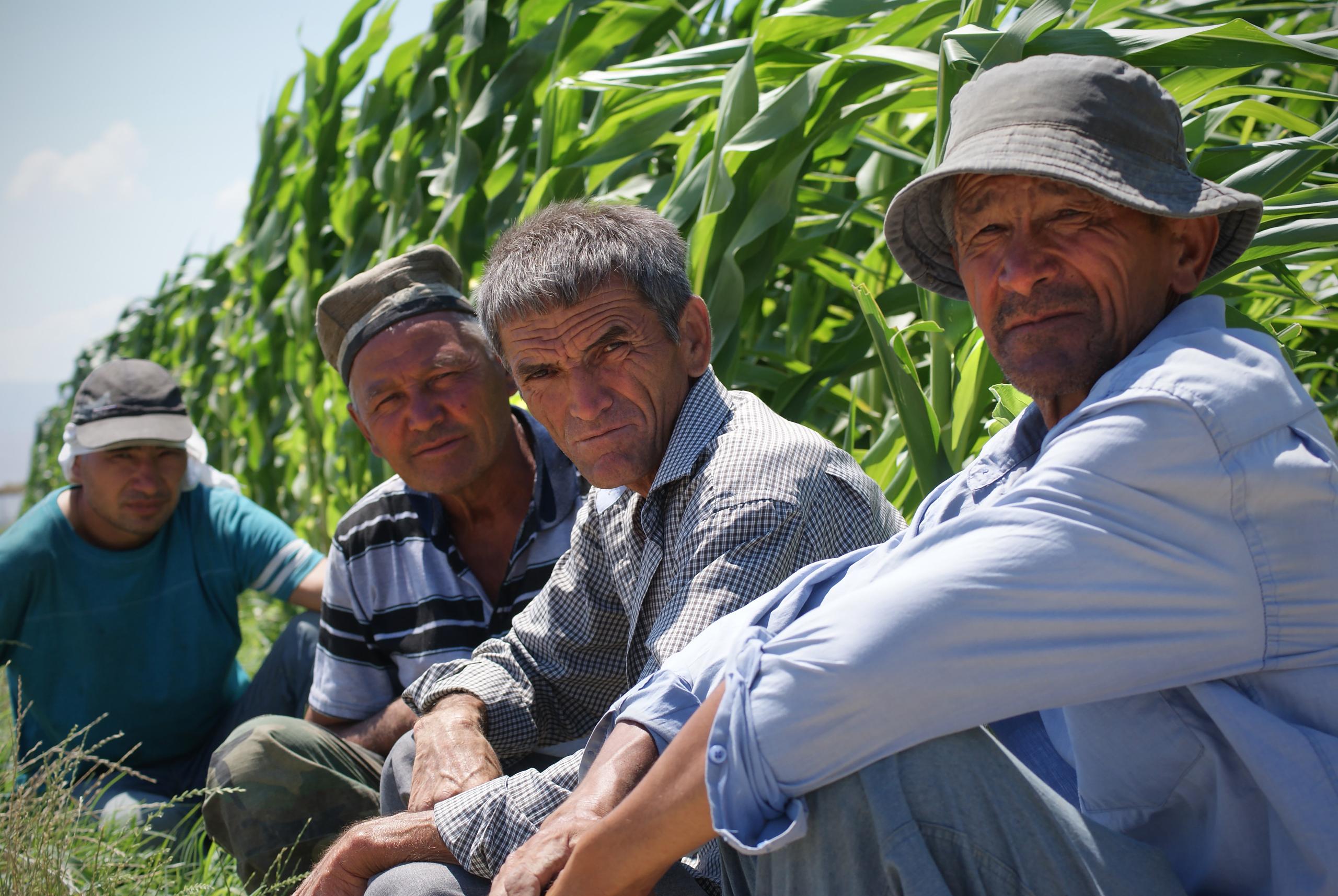
“During Soviet times everything was planned. Farmers were told to plant a hundred hectares of cotton and hand over so many tons, and they didn’t have to think about anything. This was where their responsibility ended. Now, they have to decide for themselves what to sow, find the seeds, grow them, harvest the crops and sell them. On top of this, they need certificates for the land, the produce, and to prove compliance with standards. Worst of all, even if they do all this, there is no guarantee they will be competitive on the world market. Maybe our potatoes and apricots taste better than Pakistani or Chinese ones, but who is to know if no one buys them?”
Clearly, increasing the overall production of organic cotton can only be beneficial to Tajik farmers. And there is considerable interest on the part of foreign consumers. But the question is whether the state is interested in this. After all, organic cotton is not used in Tajikistan, but is exported directly to the West, bypassing local businessmen.
Unexpected visit
Up to 400,000 tons of raw cotton are expected to be harvested in Tajikistan this year. But where will it go afterwards? To find out, we visited the head office of the Swiss company Paul Reinhart AG in Winterthur. This company, which came to Tajikistan at the beginning of the 1990s, was at one time the biggest buyer of Tajik cotton, accounting for up to half the total volume of the harvest.
Last year, however, the company closed its office in Dushanbe as “working there had become difficult,” explains its vice-president, Marco Bänniger. “There are many other exporters selling cotton. At the same time the cotton is increasingly processed in the country which is better for the state.”
One of Tajikistan’s processing companies is the factory Olim Textile, owned by businessman Jamshed Abdulov. Built in 2009 with credit from the Eurasian Bank, it is an hour’s drive from Khujand, the capital of Sughd province. The guards let us in and, after a few phone calls, take us to see the director. Sitting in his modern office, with the Koran in a golden case on his desk, he tells us about the factory. “We make yarn from medium and fine-fibre cotton, using German and Swiss equipment. At the moment we have 500 tons of cotton in our warehouse.”
The factory employs 500 people, mainly women. A bus collects them from the villages and drives them back again after work. The factory operates 24 hours a day, in three shifts. Workers earn around $100 a month. The finished yarn is exported to Russia, Belarus, Italy and Turkey. The clothing company Lacoste is among the factory’s European partners.
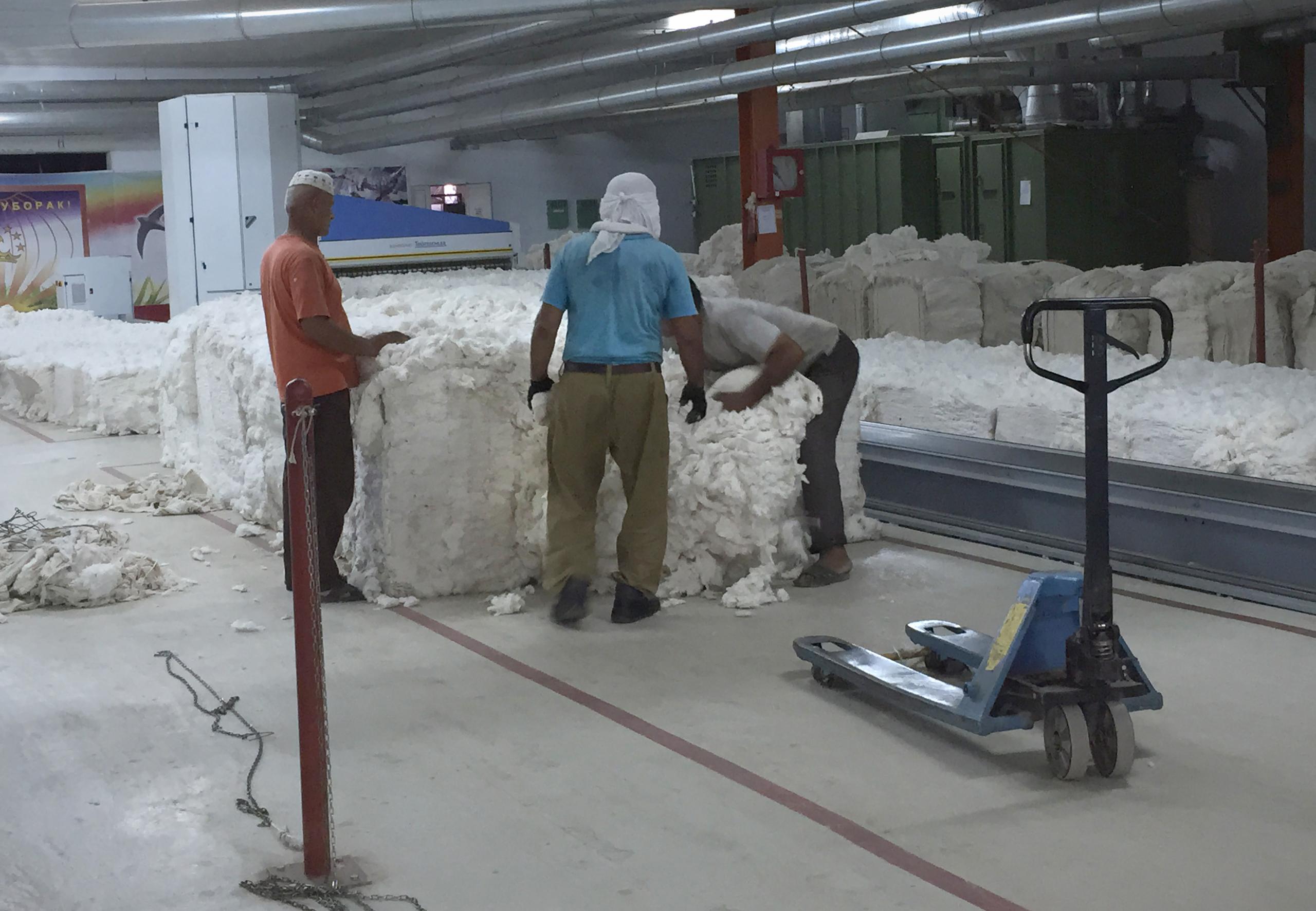
In theory, cotton could turn Tajikistan into a rich country. But this above all requires political will on the part of the country’s leadership – if, of course, it really is interested in improving the lives of farmers and maintaining large-scale cotton production.
For the Tajiks themselves, cotton is and will remain the main national crop, at the heart of the country’s identity. And maybe the process of globalisation – which this former Soviet republic is gradually joining, with Swiss support – will lend a helping hand.
The challenge of selling their crops is a constant theme for farmers. Who do I sell to and on what terms?
Local business people try to arrange contracts as early as possible to obtain the best prices while farmers try to delay the process to wait for the latest offers and maximize their chances of making a profit.
First of all they have to pay off the loans that they obtained in the Spring to buy seeds and fertilizers. In some regions it is not uncommon for companies to clean the cotton and provide seeds and fertilizer to the farmers, who then pay for the services in raw cotton.
In the case of natural disasters, drought or a poor harvest, if the farmer cannot pay off their debt then it gets transferred to the next year with additional interest charges.

This story was produced as a part of the eqda.chExternal link initiative, an exchange project between Swiss journalists and journalists from developing countries.
(Translated from Russian by Julia Bassam)

In compliance with the JTI standards
More: SWI swissinfo.ch certified by the Journalism Trust Initiative


























You can find an overview of ongoing debates with our journalists here . Please join us!
If you want to start a conversation about a topic raised in this article or want to report factual errors, email us at english@swissinfo.ch.